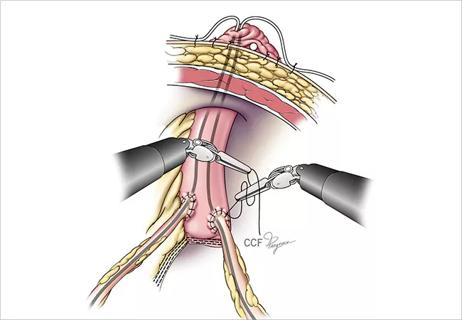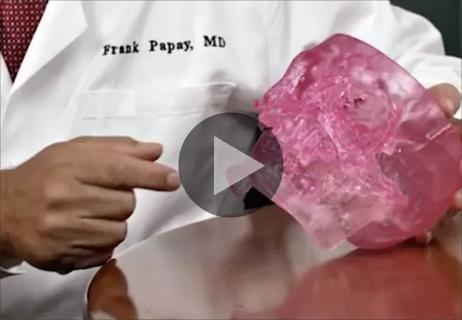Advertisement
Absolute attention to detail leads to successful excision
Advertisement
Cleveland Clinic is a non-profit academic medical center. Advertising on our site helps support our mission. We do not endorse non-Cleveland Clinic products or services. Policy
Robotic management of a left-sided inferior vena cava (IVC) tumor thrombus is challenging. This is due to the superior mesenteric artery crossing the left renal vein, which requires robotic docking from the left. It also requires dissection of the left kidney followed by repositioning and re-docking of the robot from the right side for dissection of the right renal vein, distal and proximal IVC, and the remaining left renal vein insertion into the IVC.
Despite challenges, successful outcomes are possible, as this video demonstrates. It highlights our robotic approach and techniques used to manage a large left renal tumor with IVC level III thrombus.
A 53-year-old male with a 10.9 cm left renal mass with IVC level III tumor thrombus underwent a robotic left radical nephrectomy, ipsilateral lymph node dissection and IVC thrombectomy. After the patient was positioned in the left flank position, the robot was docked on the patient’s left side. A robotic left radical nephrectomy with lymph node dissection was completed utilizing four ports in a midline configuration. The dissection of the left renal vein was taken medially until the superior mesenteric artery was encountered. The patient was then repositioned in the right side flank position and the robot was re-docked, employing the previously placed midline ports. The right renal vein and distal and proximal IVC were then controlled using modified Rummel tourniquets. Cavotomy at the border of the left renal vein allowed en bloc extraction of the thrombus. The specimen was removed from midline incision by connecting port incisions.
Operative time was 530 minutes, which included left-sided positioning, robotic docking, right-sided repositioning, and re-docking the robot. The patient did not require a blood transfusion. Hospital stay was four days and the patient was discharged with a postoperative creatinine of 1.2 mg/dL. Final pathology showed pT3bNoM1 renal cell carcinoma measuring 11 cm, clear cell type Grade 4 with necrosis and focal rhabdoid features. The tumor invaded the renal sinus and renal vein and was metastatic to the ipsilateral adrenal gland. Margins were negative.
This video shows that despite very challenging circumstances, a left-sided robotic radical nephrectomy with IVC level III tumor thrombectomy can be carried out successfully. Attention to detail, including securing vascular branches prior to excision of thrombus, are extremely important.
Dr. Kaouk is Director, Center for Robotic & Image-Guided Surgery, and Vice Chair for Surgical Innovations at Cleveland Clinic’s Glickman Urological & Kidney Institute; Professor of Surgery at Cleveland Clinic Lerner College of Medicine of Case Western Reserve University; and the Zegarac-Pollock Endowed Chair in laparoscopic and robotic surgery.
Advertisement
Advertisement

Manoj Monga, MD, assesses urology's opportunities and challenges

Study shows surgical experience impacts the risk of post-operative stricture formation

Study offers evidence to guide treatment decisions

Assessments of the shorter collection routine are encouraging, but not yet definitive

3D printing is increasing the attention to detail in patient care